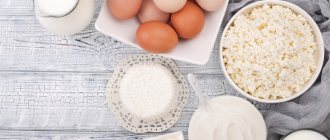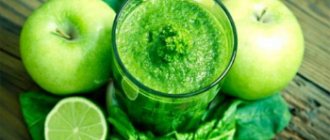The average daily calorie content is 1580 Kcal.
This diet is one of the longest. Moreover, this is precisely a diet, and not a nutritional system (like, for example, Elena Stoyanova’s original nutritional system - Sybarite). It should be noted that the diet is relatively uneven throughout the 7 weeks - and additionally, the total weekly caloric intake decreases with each week - the last seventh week has the lowest number of calories consumed. Prohibited foods are increasing in number every week.
It should be noted that all ingredients of the system must be fresh. During the German diet, you can drink unlimited water (still and non-mineralized - it does not aggravate the feeling of hunger). Alcohol in any form is excluded.
Diet menu for the sixth week:
- on Monday drink only water,
- on Tuesday up to two kilograms of oranges or grapefruits,
- on Wednesday up to two kilograms of any apples,
- on Thursday drink freshly squeezed any (except banana) fruit or vegetable juice,
- on Friday you can only drink one percent low-fat (and without additives - exclude yoghurt and fermented baked milk) kefir,
- on Saturday up to a kilogram of boiled pineapple or zucchini (not canned),
- on Sunday - your usual and usual diet (do not overindulge).
Contraindications
The German diet has a very solid list of contraindications and restrictions. First of all, you should understand that the 7-week course is designed for those people who are obese or overweight. But the 14-day method is suitable for those who have slight deviations in weight. In addition, the list of restrictions includes the following indicators:
- gastritis, pancreatitis, gastric ulcer and other chronic gastrointestinal diseases;
- diabetes;
- heart failure, vegetative-vascular dystonia and other diseases of the heart and blood vessels;
- liver and kidney diseases.
Contraindications also include recovery time, professional sports or heavy work. Women during pregnancy or breastfeeding should also not resort to the German diet. It is especially important to realize that in the German diet one cannot replace some foods with others, so if there is an individual intolerance or allergy to any product from the menu, then following the diet is impossible. Another important aspect is a mandatory consultation with a nutritionist before starting to follow the German diet. Repeating the diet for 14 days is allowed once every six months, and a course of 7 weeks can be repeated once a year.
German diet menu for the seventh week:
- on Monday drink only water,
- on Tuesday up to two kilograms of oranges or grapefruits,
- on Wednesday up to two kilograms of any apples,
- on Thursday drink freshly squeezed any (except banana) fruit or vegetable juice,
- on Friday you can only drink one percent low-fat (and without additives - exclude yoghurt and fermented baked milk) kefir,
- on Saturday up to a kilogram of boiled pineapple or zucchini (not canned),
- on Sunday you can only drink water (nothing else) - up to 5 liters.
The advantage of the German diet is that weight loss is effective - if you switch to the right one! diet after a diet, weight gain does not occur - there is no weight gain for a long time (the result is fixed for several years).
The disadvantage of the German diet is due to its duration - for example, it cannot be done during the holiday period. The diet is quite strict - in some cases, consultation with your doctor is necessary. The second clearly unexpressed disadvantage of the German diet is due to the complete ban on alcohol for almost two months. In some cases, this is unacceptable for a number of objective reasons (especially for men) and a violation of the diet is inevitable.
Add a review
1
Quitting the diet
As has been mentioned more than once above, both short-term and long-term German diets are distinguished by great strictness in compliance. Therefore, you need to exit from such methods for losing weight wisely, so as not to cause the body additional stress, which it already received in excess during the diet. A competent way out of the diet means:
- The calorie content of the menu should increase gradually, and at the same time physical activity should increase;
- new products are introduced into the diet smoothly, in no case should there be overeating and a complete exclusion of fatty heavy foods, as well as flour and sweets;
- You should not allow your body to become dehydrated; you should drink up to 2 liters of water daily.
Quitting the German diet doesn't mean you have to forget about those grueling weeks of strict eating regimen forever. Once a week there must be a fasting day. If, for example, the German diet was followed for 7 weeks, then for the fasting day you can choose the menu of one of the days of the diet that was best tolerated.
If you follow the correct exit from the diet and adhere to a further regimen, you can maintain the achieved weight for many years.
Diet "Table No. 7"
Diet No. 7 is prescribed for diseases:
- chronic nephritis (glomerulonephritis) without exacerbation and kidney failure;
- acute nephritis (glomerulonephritis) during the recovery period (from the 3-4th week of treatment);
- nephropathy of pregnancy;
- other diseases for which a low-salt diet is indicated.
Purpose : moderately sparing night function, reducing hypertension and edema, improving the excretion of nitrogenous and other metabolic products from the body.
General characteristics : the protein content is somewhat limited, fats and carbohydrates are within physiological norms. Food is prepared without salt. Salt is given to the patient in the amount specified by the doctor (3-6 g). The amount of free liquid is reduced to an average of 1 liter. Exclude extractive substances from meat, fish, mushrooms, sources of oxalic acid and essential oils. Culinary processing without mechanical and with moderate chemical sparing. Meat and fish (100-150 g per day) are boiled. The food temperature is normal.
Chemical composition and calorie content of dietary table No. 7 : carbohydrates - 400-450 g (80-90 g of sugar); proteins - 80 g (50-60% animal), fats - 90-100 g (25% vegetable), calories - 2700-2900 kcal; free liquid - 0.9-1.1 l.
Diet : 4-5 times a day.
Do's and don'ts
Recommended and excluded dishes:
Table “Dos and Don’ts”
| Products and dishes | What is possible | What not to do |
| Soups | Vegetarian with vegetables, cereals, potatoes; fruit, limited - dairy. Season with butter, sour cream, dill, parsley, citric acid, vinegar; onions after boiling and sautéing. | Meat, fish and mushroom broths, from legumes. |
| Bread and flour products | Salt-free bread, pancakes, pancakes with yeast and without salt. | Regular bread, flour products with added salt. |
| Meat and poultry | Lean beef, veal, meat and trimmed pork, lamb, rabbit, smoked, turkey, boiled or baked, lightly fried after boiling. Piece or chopped. Boiled tongue. | Fatty varieties, fried and stewed dishes without boiling. Sausages, sausages, smoked meats, canned food. |
| Fish | Low-fat, boiled, followed by light frying or baking, sliced and chopped, stuffed, aspic after boiling. | Fatty types, salted, smoked fish, caviar, canned food. |
| Dairy | Milk, cream, fermented milk drinks, cottage cheese and cottage cheese dishes with carrots, apples, rice; sour cream. | Cheeses. |
| Eggs | Yolks added to dishes. Whole eggs - up to 2 per day (soft-boiled, scrambled eggs) - when reducing meat, fish or cottage cheese. | — |
| Cereals | Various cereals (in particular, sago, rice, corn, pearl barley) and pasta in any preparation. | Legumes. |
| Vegetables | Potatoes and vegetables are widely used in any culinary processing. | Legumes, onions, garlic, radishes, radishes, sorrel, spinach, salted, pickled and pickled vegetables, mushrooms. |
| Snacks | Vinaigrettes without pickles, salads from fresh vegetables and fruits. | — |
| Fruit | Sweet dishes and sweets. Various fruits and berries, raw, boiled, compotes, jelly, jelly, honey, jam, candy, popsicles. | Chocolate. |
| Sauces and spices | Tomato, milk, sour cream, fruit and vegetable sweet and sour sauces, onion sauce made from boiled and fried onions. Vanillin, cinnamon. citric acid, vinegar. | Meat, fish and mushroom sauces, pepper, mustard, horseradish. |
| Beverages | Tea, weak coffee, fruit and vegetable juices. Rose hip decoction. | Strong coffee, cocoa, mineral waters rich in sodium. |
| Fats | Unsalted butter, ghee and refined vegetable oils; limited - lard. | — |
Example of daily dishes from the weekly menu
- First breakfast: soft-boiled egg, crumbly buckwheat porridge, tea;
- Second breakfast: baked apples;
- Lunch: vegetarian borscht with sour cream (1/2 serving), boiled meat with fried potatoes, dried fruit compote;
- Afternoon snack: rosehip decoction;
- Dinner: baked carrot-apple meatballs, noodle soup with cottage cheese, tea.
Basic principles
The German diet is unusual in its approach to weight loss. At the first meeting, it can even frighten and inspire uncertainty as to whether it is even possible to withstand it. But nutritionists classify it only as a moderate degree of difficulty, since it gradually prepares the body for each next stage.
The decrease in calorie content occurs slowly: if in the first week it is about 2,000 kcal, then by the last week it drops to 1,000 or even less. This is a long fast, which is recommended for those who have time to lose weight. This approach is practically safe for health. Course - 7 weeks (classic version).
At the first stage, it is necessary to create a menu in accordance with the principles of proper nutrition, selecting only the healthiest and low-calorie foods. Then, every week, one of the days is given over to a mono-diet, it is more like cleansing the body, and on all the rest you need to stick to the initially designed diet. And this happens for 7 weeks, until all 7 days are minimally low-calorie.
Preference is given to fresh products, without heat treatment. For fasting days, this restriction is absolute, but for a regular diet there may be relaxations (for soups and meat mainly). Mineral water is not welcome; the diet suggests cleansing the body with raw water.
Scheme:
The results of the German diet are impressive: there are real stories of people losing 17 kilograms in 7 weeks. This is the maximum level that has been achieved. On average, weight loss during this period occurs by 10-12 kg, although this is too individual an indicator to be reduced to general figures.
Diet “Table No. 7a”
Diet No. 7a is prescribed in the following cases:
- acute nephritis (glomerulonephritis) in severe form after fasting days and moderate severity from the first days of illness;
- chronic nephritis (glomerulonephritis) with severe renal failure.
Purpose : maximum sparing of kidney function, improvement of excretion of metabolic products from the body, reduction of hypertension and edema.
General characteristics : predominantly plant-based diet with a sharp restriction of proteins, with the exception of sodium chloride. The amount of fats and carbohydrates is moderately reduced. Avoid products rich in extractives, essential oils, and oxalic acid. Culinary processing without mechanical sparing: boiling, baking, light frying. Food is prepared without salt, bread is salt-free. The amount of liquid should correspond to or no more than 300-400 ml exceed the amount of urine of the patient over the previous day.
Chemical composition and calorie content of dietary table No. 7A : carbohydrates - 350 g (80 g sugar); proteins - 20 g (50-60% animal, and in case of chronic kidney failure - 70-75%), fats - 80 g (15% vegetable), 8.8-9.2 MJ (2100-2200 kcal); sodium chloride, free liquid - 1.5-2 liters or more.
Diet : 5-6 times a day.
Do's and don'ts
Recommended and excluded foods and dishes:
Table “Dos and Don’ts”
| Products and dishes | What is possible | What not to do |
| Bread and flour products | Protein-free salt-free bread on corn starch - 100 g, in its absence 50 g of wheat salt-free bread or other flour products baked with yeast without salt. | Regular bread, flour products with added salt. |
| Soups | Taking into account the permitted liquid - from sago, vegetables, potatoes, fruits. Season with boiled sautéed onions, sour cream, and herbs. | Meat, fish, mushroom broths, dairy, cereals (except sago) and legumes. |
| Meat, poultry, fish | Up to 50-60 g gross lean beef, veal, meat and trimmed pork, rabbit, chicken, turkey, fish. After boiling, you can bake or lightly fry, in pieces or chopped. | All meat and fish products (sausages, canned food, etc.) |
| Dairy | 60 g (or more due to meat and fish) milk, cream, sour cream. Cottage cheese - with the exception of meat and fish. | Cheese |
| Eggs | In dishes - 1/4-1/2 eggs per day or 2-3 per week (soft-boiled, omelet) | — |
| Cereals | Sago, limited - rice, protein-free pasta. With water and milk in the form of porridges, puddings, casseroles, pilaf, cutlets. | Other cereals and pasta, legumes. |
| Vegetables | Potatoes and fresh vegetables (200-250 g and 400-450 g gross, respectively) in the form of various dishes. Boiled and fried onions - in dishes. Dill, parsley. | Salted, pickled and pickled vegetables, legumes, spinach, sorrel, cauliflower, mushrooms, radish, garlic. |
| Snacks | Vegetable salads and vinaigrettes with vegetable oil. | — |
| Fruits, sweet dishes and sweets | Various fruits and berries. Raw, dried, baked. Kissels, compotes and jellies. Sugar, honey, jam, not chocolates. | Chocolate, milk jelly, ice cream. |
| Sauces and spices | To “camouflage” salt-free diets: sweet and sour sauces, tomato, sour cream, vegetable and fruit sauces, vanillin, cinnamon, citric acid. Boiled, fried onions. | Meat, fish, mushroom sauces; mustard, pepper, horseradish. |
| Beverages | Weak tea with lemon, fruit and berry juices, tomato tea, rose hip decoction. | Cocoa, natural coffee, mineral waters rich in sodium. |
| Fats | Unsalted butter, ghee, vegetable oils. | Other fats. |
Example of daily dishes from the weekly menu
- First breakfast: carrot-apple cutlets baked in vegetable oil, sago milk porridge, tea.
- Second breakfast: fresh fruit.
- Lunch: vegetarian vegetable soup (1/2 serving), boiled meat with tomato sauce, boiled potatoes, jelly.
- Afternoon snack: decoction of wheat bran with sugar.
- Dinner: sago pilaf with fruit, vegetable salad with vegetable oil, tea.
- At night: fruit juice. If necessary, reduce the amount of free liquid (tea, jelly).
German Diet Recipes
The German diet is considered one of the longest, but very effective diets. Everyone who followed it from start to finish experienced significant weight loss.
This diet is traditionally followed by residents of Germany and nearby countries, including the famous Marlene Dietrich, who used the diet to improve her vitality, since she did not suffer from excess weight. The diet was developed by German nutritionists for obese women and men.
A little about the species
There are two options for the German diet - a two-week diet with a strict menu and a more rigid and complex version of the diet, designed for 7 weeks.
The first option, if strictly followed, promises weight loss of about 6-7 kilograms within two weeks of being on this diet regimen. The diet itself is simple, but while following it there is a feeling of slight hunger, although still quite tolerable. If this fact suits you, the diet may well be suitable, it gives strength and energy.
With a seven-week diet, you need three times more willpower - since when following this diet, the conditions of calorie restriction increase from week to week. However, upon exiting it, up to 20 kilograms of weight loss is promised.
But you need to immediately decide that “German” is another diet, simple, but very monotonous and lasting from 2 to 3 weeks. It consists of 4-5 sweet apples, 1 large orange, 80 g of any lean meat without fat per day, with a small piece of bread or crispbread. All this complements the intake of liquid - green tea, mineral water. This is a strict diet option that is very calorie restrictive, and in this form it is not worth using it for a long time.
Let's take a closer look at the classic German diet to decide on its recipes. The diet should be followed very strictly; you cannot change dishes at your request or because you are unable to cook and eat them, so weigh all your chances before you start. Between meals you should drink only lightly salted mineral water without gas.
Diet principles
This is a low-calorie diet, due to which fat is actively burned. In the first two weeks, up to 5 kilograms of weight are lost. The weight melts gradually due to lower calorie intake and increased fasting days.
The menu of this diet is sharply uneven, regular meals alternate progressively with your usual meals, in the first week the volume of calories is the largest, by the seventh week you will have to suffer quite pronounced hunger. The average daily caloric content in terms of all days of the diet will be about 1500 Kcal, but some days are, in fact, therapeutic fasting.
All foods should be fresh, do not limit water consumption, as it dulls the feeling of hunger, you can drink green tea . Alcohol is strictly excluded for the entire duration of the diet.
Seven Week Diet Recipe
In the first week, food restrictions affect only Monday - instead of food, it is suggested to drink only clean water , up to three to four liters. All other days of the week until Sunday you eat as usual.
Menu
Menu for 2 weeks
Menu of the third week (first 2 - above)
Menu for 7 weeks
The German diet is a special nutrition system that can cause confusion and seem at first glance too strict. In fact, it is built as correctly as possible - with a gradual decrease in daily calorie content. Thus, it promotes effective weight loss and minimizes health risks. A very rare hunger strike allows you to lose 10 kilograms or more without side effects or complications.











